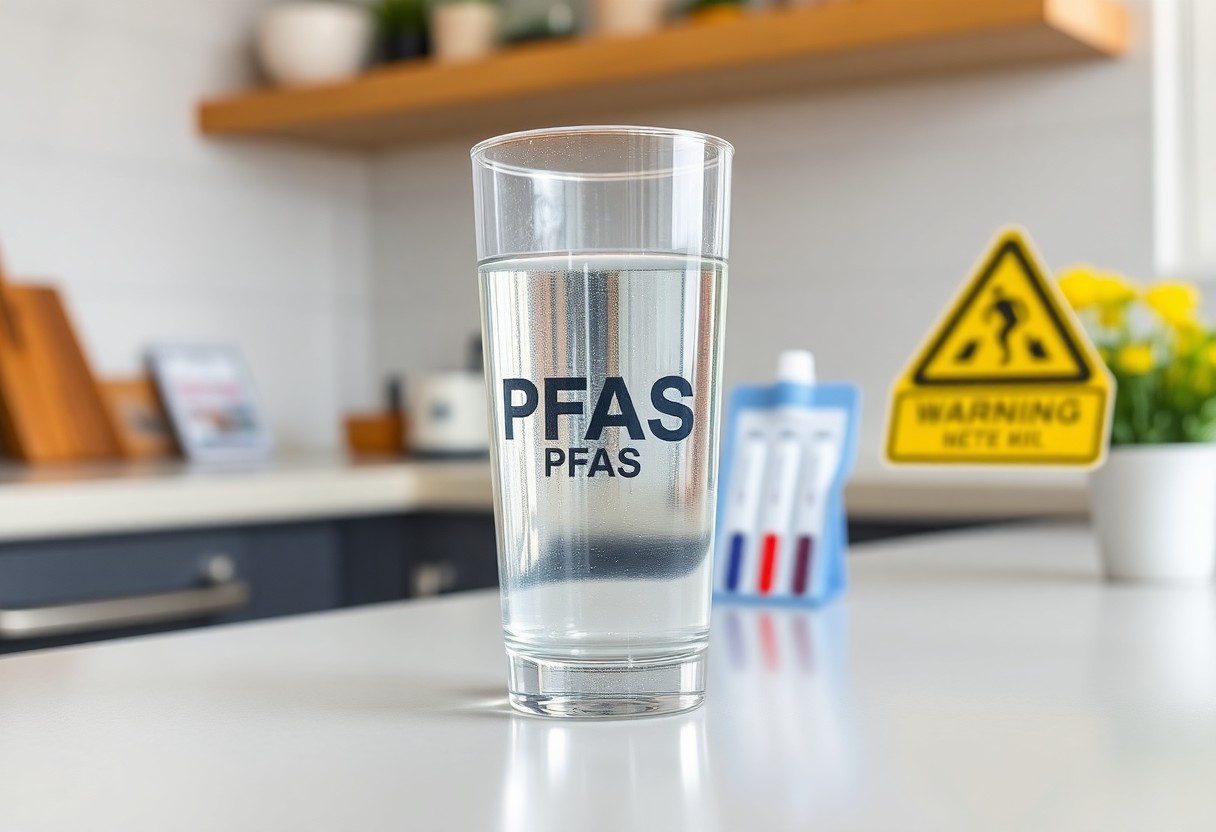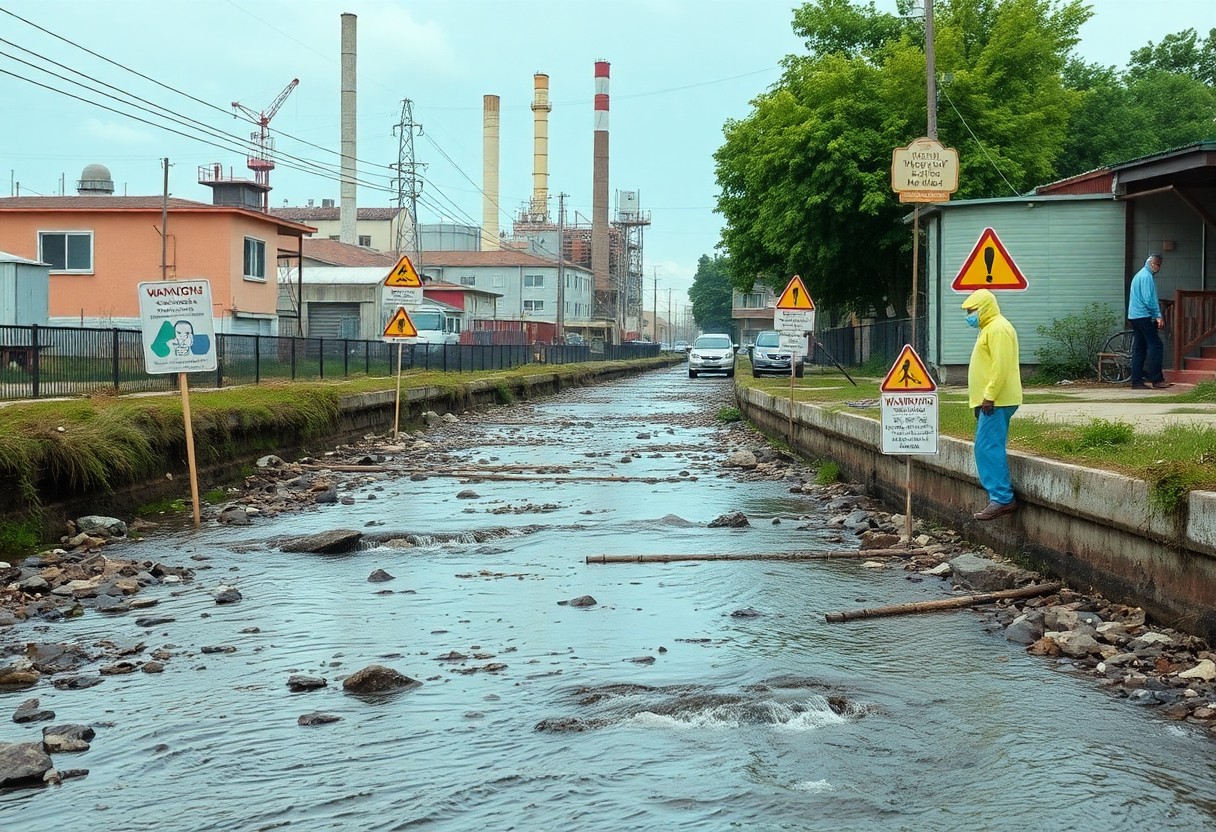Liability in PFAS lawsuits can fall on various entities, including manufacturers, governments, and even local municipalities. If you’re navigating this complex legal landscape, it’s crucial to understand the potential responsibilities of these parties concerning the health risks posed by per- and polyfluoroalkyl substances (PFAS). These chemicals, commonly found in everyday products, can lead to serious environmental damage and health issues. You may find that identifying the right party to hold accountable is key to your case, whether you are a victim or an advocate for change.

Understanding PFAS
A common question surrounding PFAS (Per- and Polyfluoroalkyl Substances) is what they are and why they are concerning. These man-made chemicals have been widely used since the 1940s for their water- and grease-resistant properties, making them necessary in various industries ranging from firefighting foam to food packaging. As a result, PFAS have become pervasive in the environment, leading to significant health and environmental concerns.
What are PFAS?
For you to understand PFAS, it’s necessary to realize these are a group of over 4,700 synthetic chemicals designed to repel water and grease. Commonly found in products like non-stick cookware, stain-resistant fabrics, and food packaging, their persistence in the environment is alarming. As they do not break down easily, their accumulation poses extensive risks to both human health and ecosystems.
Health and Environmental Impacts
Environmental exposure to PFAS chemicals can lead to severe health impacts. You should be aware that these substances have been linked to increased risk of cancer, liver damage, reproductive issues, and developmental delays in children. Furthermore, they can contaminate drinking water supplies, affecting larger populations over time. Their ability to bioaccumulate means even low levels can be dangerous, hence understanding PFAS’s impact on both your health and the environment is vital.
In fact, the dangers surrounding PFAS extend beyond individual health risks. Studies have shown that chronic exposure to these chemicals can disrupt your body’s hormonal balance and lead to conditions like immune system suppression, making you more vulnerable to diseases. Additionally, PFAS contamination can severely impact ecosystems, harming wildlife and plants, thereby affecting your overall environment. As the awareness of PFAS grows, it becomes increasingly important for you to understand the implications for both personal health and community well-being.
Legal Landscape
One of the most pressing aspects of PFAS litigation is the evolving legal landscape. As awareness of the environmental and health risks associated with PFAS compounds grows, numerous lawsuits have emerged, targeting manufacturers, government agencies, and other parties for the contamination caused by these substances. This multifaceted legal battle raises questions about liability and accountability, as plaintiffs seek justice for health consequences and environmental damage.
Overview of PFAS Litigation
To understand the scope of PFAS litigation, you should be aware that cases range from personal injury claims to large-scale environmental lawsuits. They often involve complex issues, such as proving causation and establishing the responsibility of various parties, which can include manufacturers, distributors, and even governmental entities that have allowed PFAS usage in public infrastructure.
Key Regulations and Legislation
Landscape factors in the regulatory environment surrounding PFAS, which includes both federal and state-level initiatives aimed at managing and regulating these hazardous substances. You should note that legislation can vary significantly, with some states adopting stringent measures to limit PFAS use and emissions, while others lag behind. Understanding these regulations is key to grasping the broader implications of PFAS litigation.
Due to the significant public health concerns related to PFAS exposure, various regulations and legislation have emerged. You will find that the EPA’s PFAS Action Plan emphasizes reducing PFAS contamination in drinking water and promoting the development of safe alternatives. Additionally, some states have implemented laws to set drinking water limits for PFAS, establish testing protocols, and mandate cleanup efforts for contaminated sites. As legal actions continue to unfold, the regulatory framework will likely evolve, impacting future PFAS-related litigation.
Identifying Liable Parties
You may wonder who bears responsibility for the widespread contamination caused by PFAS (per- and polyfluoroalkyl substances). Understanding the various entities involved is key to assessing accountability in these lawsuits. Both private companies and government agencies play significant roles in the production, regulation, and management of these hazardous chemicals, making the question of liability multifaceted and complex.
Companies Responsible for PFAS Production
Around the world, several major corporations have manufactured PFAS-containing products, including well-known brands in the fast-food, textiles, and aerospace industries. These companies are now facing lawsuits as individuals and municipalities seek compensation for health issues and environmental damage linked to PFAS exposure.
Government Involvement and Accountability
Companies establish regulations regarding the use of PFAS, but they may not always act swiftly or adequately to protect public health. Government agencies have a duty to monitor and regulate these substances, yet inadequate oversight at various levels has left communities vulnerable to contamination. And, while some agencies are beginning to take action against PFAS producers, the slow response to emerging scientific evidence can complicate efforts to hold these entities accountable. Balancing public safety with industrial interests poses a significant challenge in combatting the PFAS crisis.
Case Studies
Your understanding of PFAS lawsuits can be enhanced by examining key case studies, as they illustrate the varied impacts and legal outcomes associated with these substances. Here are some notable examples:
- DuPont vs. West Virginia Residents: Settled for $671 million in 2017 over contamination linked to PFOA.
- 3M Settlement in Minnesota: Agreed to pay $850 million in 2018 for PFAS pollution affecting water supplies.
- PFAS Contamination in North Carolina: Affected residents received $68 million from Chemours in 2019.
- Newark, NJ Lawsuit: In 2020, various companies faced claims for contaminating the city’s water systems.
Notable PFAS Lawsuits
With increasing awareness of the harmful effects of PFAS, numerous lawsuits have emerged, showcasing the complexity of liability in these cases. Noteworthy actions include residents targeting major corporations, local governments addressing contamination in public water systems, and settlements reaching hundreds of millions. Each lawsuit contributes invaluable insights into accountability and public health concerns.
Outcomes and Implications
For those involved, the outcomes of PFAS lawsuits can reshape industry practices and influence regulatory frameworks. Many settlements require companies to implement enhanced safety measures and provide financial assistance to affected communities. This fosters accountability, as more businesses recognize the consequences of their actions and the need for environmental responsibility.
Considering the extensive implications of these lawsuits, it’s important to understand their broader significance. As courts increasingly rule against corporations and government entities responsible for PFAS contamination, communities gain leverage in demanding change. This not only holds companies to higher standards, but also encourages the government to enhance regulatory oversight on toxic substances like PFAS. The ripple effects can lead to improved public health, cleaner water systems, and industry-wide shifts towards more sustainable practices, ultimately benefiting society at large.
Defenses in PFAS Litigation
After initiating a PFAS lawsuit, defendants often employ various strategies to challenge the claims against them. These defenses can range from disputing the scientific evidence linking PFAS exposure to health issues, asserting compliance with regulations at the time of manufacturing, or arguing that the plaintiffs failed to demonstrate that their health problems were specifically caused by PFAS. Understanding these defenses is vital for you as a plaintiff to navigate the complexities of these legal battles.
Common Legal Defenses Used by Companies
Above all, companies may argue that they acted in accordance with existing safety standards and regulations when producing PFAS products. They might also claim that the plaintiffs lack sufficient evidence to establish a direct link between their products and the alleged harm. Additionally, some companies could assert that the risks of PFAS were not known at the time of production, thus shifting liability away from themselves.
Challenges Faced by Plaintiffs
For individuals pursuing claims against PFAS manufacturers, several hurdles can arise, posing significant obstacles to achieving a successful outcome.
Used in litigation, the challenges faced by plaintiffs often include the need to provide compelling scientific evidence linking PFAS exposure to health conditions, which can be costly and time-consuming. Additionally, plaintiffs may struggle with statute of limitations issues that can limit their time to file a claim. The complexity of proving causation — establishing that PFAS specifically caused the health issues rather than other factors — can also undermine your case. Furthermore, you may encounter strong defenses from well-funded corporations with extensive legal resources, making the litigation process more rigorous and challenging. As a plaintiff, understanding these challenges will equip you better for potential legal battles ahead.
The Future of PFAS Lawsuits
Unlike traditional environmental lawsuits, future PFAS litigation is expected to evolve significantly as awareness of the harmful effects of these chemicals grows. You may witness an increase in claims against manufacturers, suppliers, and even government agencies as individuals and communities seek accountability for contamination and associated health risks. This shift could lead to more comprehensive settlements and stricter regulations aimed at reducing PFAS exposure.
Emerging Trends in Litigation
Trends in PFAS litigation are shifting towards broader accountability and multi-district litigation, making it easier for individuals like you to join forces in seeking justice. You might observe an uptick in class-action lawsuits, where communities come together to address widespread contamination and health concerns. As awareness increases, expect more cases to emerge, potentially holding not just manufacturers but also insurers and retailers accountable for PFAS-related damages.
Potential Changes in Legislation
Around the country, significant changes in legislation regarding PFAS are on the horizon as public pressure mounts for safer chemicals. You may see new laws imposing stricter limits on the use of PFAS in consumer products and improved regulations for industries that release these substances. As policymakers grapple with mounting evidence of PFAS dangers, the landscape could shift toward stricter controls for manufacturers, potentially leading to increased liability avenues that could benefit affected individuals like you.
Even now, lawmakers are considering measures to bolster regulations surrounding PFAS, which could fundamentally change how companies operate. Proposed legislation could introduce mitigation strategies and enforce penalties for non-compliance, making the chemical industry more accountable. In your community, awareness campaigns might emerge, highlighting the need for better safety practices and public health protections. These changes aim to ensure that your rights and health are prioritized, paving the way for a future where exposure to hazardous chemicals is significantly reduced.
Conclusion
With this in mind, understanding liability in PFAS lawsuits is imperative for you as a potential claimant or stakeholder. Companies that manufactured or used PFAS substances may be held responsible, but government entities can also face legal challenges for regulation failures. As you navigate this complex landscape, consider consulting with legal experts to better assess your options and rights regarding exposure to PFAS, ensuring that your concerns are appropriately addressed.



















